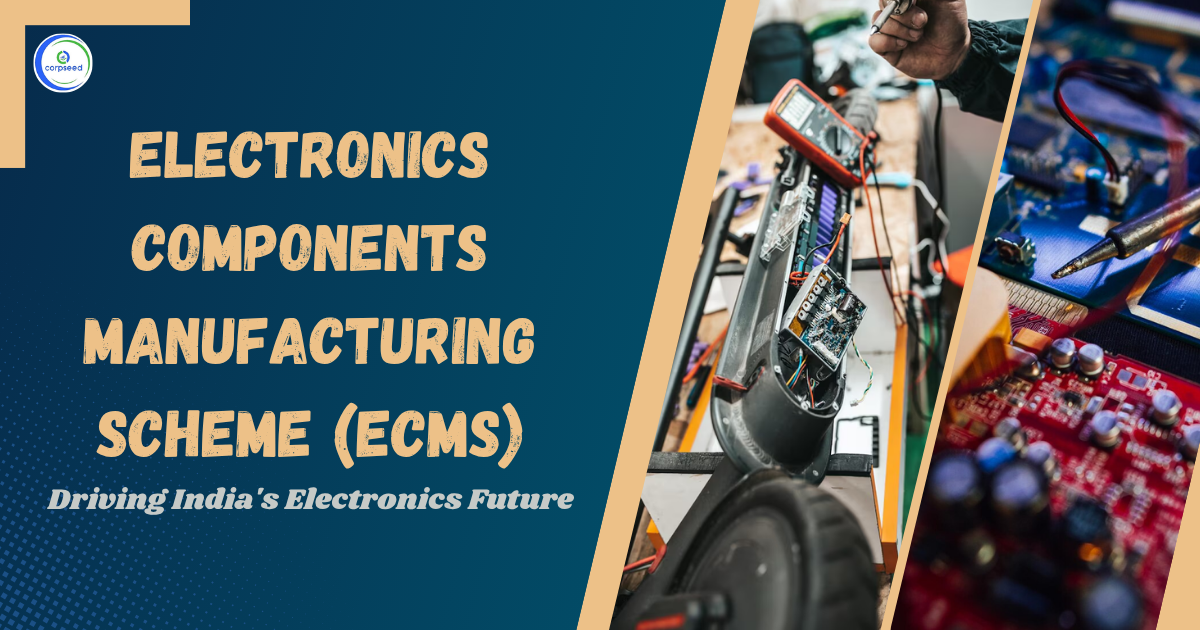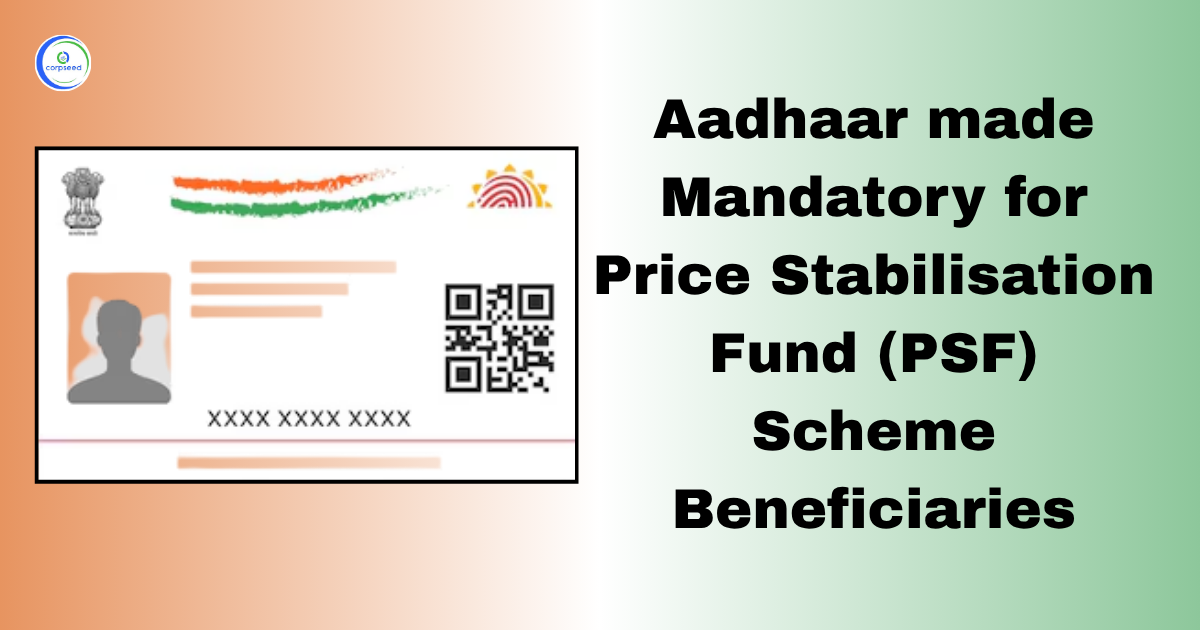India has started a new journey in electronics making. The government has approved the first seven projects under the Electronics Components Manufacturing Scheme (ECMS). These projects are worth ₹5,532 crore and are expected to produce goods worth ₹44,406 crore. This big step is the beginning of a new phase for India's electronics industry. It helps the country move closer to becoming a global center for making advanced electronic parts and materials.
The scheme is not just about setting up factories, it is about building a strong base that supports the making of high-quality electronic products within India. In the financial year 2024–25, electronics became India's third-largest export category, showing the rapid progress of this sector. The ECMS now seeks to deepen this success by encouraging domestic production.
Table of Contents
- What is the Electronics Components Manufacturing Scheme (ECMS)?
- Key Features of ECMS
- Why the Electronics Component Manufacturing Scheme Matters?
- Segments Covered Under ECMS
- First Seven Projects Approved under ECMS
- Products Covered Under the First ECMS Approvals
- Economic and Industrial Impact of the ECMS Projects
- India's Rise in Electronics Manufacturing
- Synergy with Other Government Initiatives
- Conclusion
--------------Blog Contact Form-------------
What is the Electronics Components Manufacturing Scheme (ECMS)?
ECMS is a central government scheme launched by the Ministry of Electronics and Information Technology (MeitY) by notification on 8 April 2025. It is aimed at developing a robust electronics component manufacturing ecosystem in India by attracting global and domestic investment across the value chain. The scheme's budget (outlay) is about ₹22,919 crore over six years, with an optional one-year gestation period. The scheme aims to:
- Increase domestic value addition (DVA) in electronics components
- Integrate Indian manufacturers into global value chains (GVCs)
- Attract investment and build manufacturing capacity for sub-assemblies and bare components
- Generate employment and promote high-value technology manufacturing.
The tenure of the scheme is six years with one year of gestation. The ECMS complements other national initiatives such as the Production Linked Incentive (PLI) Scheme and the India Semiconductor Mission (ISM). Together, they create a seamless electronics value chain, from devices to chips, components to materials, and manufacturing to innovation.
Key Features of ECMS
Here are the main features of the scheme:
1. Target Segments
The scheme defines several segments under which investments qualify. These include:
- Sub-assemblies, e.g., display module sub-assembly, camera module sub-assembly.
- Bare components, e.g., multi-layer PCB, non-surface mount passive components, Li-ion cells (digital applications), etc.
- Selected bare components, for example, high-density interconnect (HDI)/MSAP/flexible PCBs, SMD passive components.
- Supply-chain ecosystem & capital equipment, components & capital goods used in electronics manufacturing.
2. Incentive Types
ECMS offers differentiated incentives depending on the segment:
- Turnover-linked incentives (for certain sub-assemblies or components).
- Capital expenditure (capex) linked incentives (for supply-chain and capital equipment).
- Hybrid incentives (combination of turnover + capex) for select advanced segments.
3. Quality and Domestic Design Focus
The scheme emphasises that manufacturing units should have domestic design capabilities, meet global quality standards (e.g., Six Sigma), and promote high-value-added manufacturing.
4. Application Window
The scheme invites applications online on a first-come, first-served basis. The window for many segments closed on 30 September 2025 (for certain segments) and for some supply chain/capital equipment segments extended till April 2027.
5. Job Creation & Production Targets
As per the notification, the scheme targeted around 91,600 direct jobs and production worth about ₹4,56,500 crore from investments of around ₹59,350 crore.
Why the Electronics Component Manufacturing Scheme Matters?
The ECMS holds strategic importance for India's electronics ecosystem. Here are some of the reasons:
- Reducing Import Dependence: India has been importing many components, such as PCBs (printed circuit boards), laminates, camera modules, raw materials/polymers, etc. ECMS facilitates domestic manufacturing and reduces dependence on imports.
- Value-chain Deepening: While India has grown in device manufacturing (for example, mobile phones), component manufacturing has lagged. ECMS aims to fill that gap and capture higher value in the supply chain.
- Export Potential: A stronger component ecosystem will help increase exports of electronic components and systems. That helps India move up from being an assembly hub to being a design‐and‐manufacture hub.
- Job Generation & Skill Building: High-value component manufacturing requires a skilled workforce, design capabilities, testing, and quality control. This will create jobs and help build capabilities in India.
- Global Value Chain Integration: With global electronics supply chains realigning (for example, away from China), India is positioning itself as an alternative hub. ECMS helps make India more attractive to global electronics investments.
Segments Covered Under ECMS
Here is a breakdown of the component segments that ECMS targets, and why they matter:
1. Sub-assemblies (Target Segment A)
- The display module sub-assembly and the camera module sub-assembly are part of this category.
- These sub-assemblies are important for smartphones, tablets, laptops, and wearable devices.
- Domestic production of camera modules means reduced imports for cell phones, drones, medical imaging devices, automotive cameras, etc.
2. Bare Components (Target Segment B)
- Includes non-SMD (surface mount device) passive electronic components, electro-mechanical parts, multi-layer PCBs, Li-ion cells (digital applications), and enclosures for mobile/IT hardware.
- Multi-layer PCBs are the backbone of electronic devices, Li-ion cells are key for digital applications, and enclosures add value to hardware manufacturing.
3. Selected Bare Components (Target Segment C)
- Advanced PCB types, HDI (High-Density Interconnect), MSAP (Modified Semi-Additive Process), Flexible PCBs, SMD passive components.
- These segments are technologically challenging and have high value-addition, capturing them offers India an edge in high-end electronics manufacturing.
4. Supply-Chain Ecosystem & Capital Equipment (Target Segment D)
- Components and parts used in the manufacturing of the above segments, and capital goods (equipment used in electronics manufacturing) are covered.
- This is significant because manufacturing equipment, precision tooling, and testing equipment are often imported, targeting capital equipment helps build a deeper base.
First Seven Projects Approved under ECMS
The Ministry of Electronics and Information Technology has approved the first seven projects under the ECMS, representing a combined investment of ₹5,532 crore. These projects will generate ₹44,406 crore in output, reduce import dependence, create high-skill jobs and build trusted supply chains for defence, telecom, EVs and renewable energy.
| Applicant | Product |
Location |
Investment (₹ crore) | Production (₹ crore) | Employment |
| Kaynes Circuits India Pvt. Ltd. | Multi-Layer PCB | Tamil Nadu | 104 | 4,300 | 220 |
| Kaynes Circuits India Pvt. Ltd. | Camera Module Sub-Assembly | Tamil Nadu | 325 | 12,630 | 480 |
| Kaynes Circuits India Pvt. Ltd. | HDI PCB | Tamil Nadu | 1,684 | 4,510 | 1,480 |
| Kaynes Circuits India Pvt. Ltd. | Laminate | Tamil Nadu | 1,167 | 6,875 | 300 |
| SRF Limited | Polypropylene Film | Madhya Pradesh | 496 | 1,311 | 225 |
| Syrma Strategic Electronics Pvt. Ltd. | Multi-Layer PCB | Andhra Pradesh | 765 | 6,933 | 955 |
| Ascent Circuits Pvt. Ltd. | Multi-Layer PCB | Tamil Nadu | 991 | 7,847 | 1,535 |
Total: ₹5,532 crore investment | ₹44,406 crore production | 5,195 jobs
Products Covered Under the First ECMS Approvals
The first set of ECMS projects focuses on high-value electronic components and base materials that form the backbone of modern technology.
1. Camera Module Sub-Assembly
Camera modules help capture pictures and videos in phones, drones, and robots. Making them in India will cut imports and grow the local camera parts industry.
2. Multi-Layer PCB
These boards connect parts inside phones, computers, and cars. They make devices smaller and work better.
3. HDI PCB
HDI PCBs are upgraded circuit boards used in wearables, aircraft, and medical tools. They help make devices faster and smarter.
4. Copper Clad Laminate (CCL)
CCL is the main layer used to make circuit boards. India will now produce it locally instead of importing it.
5. Polypropylene Film
This thin film is used in capacitors for electronics and cars. Local production will save costs and support supply chains.
Economic and Industrial Impact of the ECMS Projects
The ECMS projects will bring big and lasting benefits to India's economy and industries. These projects will help in:
- Reducing Import Dependence: Making products in India will lower costs and reduce the need to buy from other countries.
- Generating Employment: These projects will create many jobs and help local people earn better incomes.
- Growth of Innovation: The scheme supports new ideas for growth and better designs for development, helping India make smarter technology.
- Trusted Supply Chains: Powerful and safe supply chains will help key sectors like defence, telecom, renewable energy, and electric vehicles.
With ECMS, India is becoming a "Product Nation", a country that not only uses technology but also makes and sells it to the world.
India's Rise in Electronics Manufacturing
India's electronics journey in the past decade has been remarkable:
| Year | Production (₹ crore) | Exports (₹ crore) |
| 2014–15 | 1,90,000 | 38,000 |
| 2024–25 | 11,30,000 | 3,27,000 |
This shows a six-fold rise in production and an eight-fold rise in exports in ten years. In 2024–25, electronics became the third-largest and fastest-growing export category, rising from the seventh position in 2021–22. In the first half of FY 2025–26, electronics exports reached USD 22.2 billion, maintaining strong momentum.
Synergy with Other Government Initiatives
The ECMS works hand in hand with other important government programs, such as:
- Production Linked Incentive (PLI) Scheme: Helps global companies set up factories and make products in India.
- India Semiconductor Mission (ISM): Focuses on building India's ability to make computer chips.
- Design Linked Incentive (DLI) Scheme: Supports new ideas and creative designs in the electronics field.
All these programs together build India's electronics system, from planning and design to making and delivering products. They help create a strong, growing, and self-reliant electronics industry in the country. With projects worth ₹5,532 crore approved in the first phase, the country is on track to become a global hub for electronic components and materials.
Conclusion
The Electronics Components Manufacturing Scheme (ECMS) is a turning point in the electronic sector of India. With projects worth ₹5,532 crore approved in the first phase, the country is on track to become a global hub for electronic components and materials. The scheme creates jobs, attracts investment, reduces imports, and enhances India's technological independence.
It complements existing programs like PLI and ISM to build an unbroken value chain from semiconductors to finished devices. India has changed from buying most electronics from other countries to making and selling them worldwide. This great change shows how smart planning and strong leadership can guide a country toward progress.
The ECMS is not just a normal government plan, it is a national mission to help India grow as a global leader in making and developing advanced electronic products. As production rises, jobs multiply, and exports soar, India's vision of becoming a trusted global electronics powerhouse is steadily turning into reality.
This portion of the site is for informational purposes only. The content is not legal advice. The statements and opinions are the expression of author, not corpseed, and have not been evaluated by corpseed for accuracy, completeness, or changes in the law.
BOOK A FREE CONSULTATION
Get help from an experienced legal adviser. Schedule your consultation at a time that works for you and it's absolutely FREE.



_for_Compressed_Biogas_(CBG)_Corpseed.webp)





_Scheme_in_India_Corpseed.png)